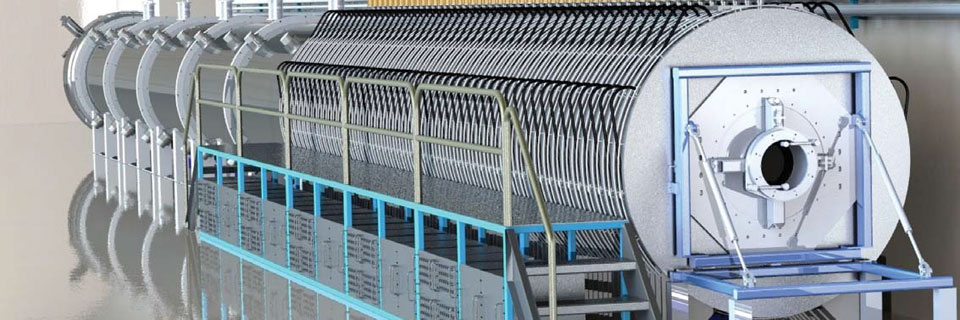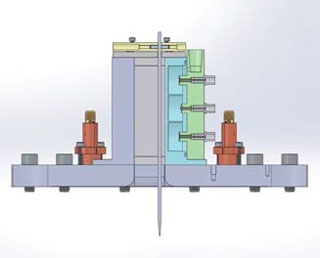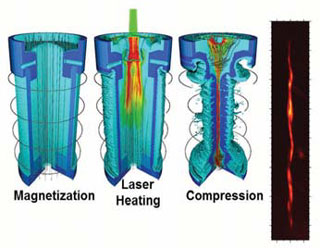
We have developed a conceptual design of Pluto, a novel accelerator that will be powered by nextgeneration pulsed-power technology. Pluto will deliver 3 terawatts in a 50-nanosecond pulse to advanced particle-beam diodes. (For comparison, the installed electrical power generation capacity in the US is 1.1 terawatts.) The accelerator, designed using the principles of engineered safety, eliminates hazards such as highpower lasers and asphyxiating gases that are inherent to conventional pulsed power. The accelerator will drive a variety of experiments in support of Sandia’s national security mi

A thorough understanding of the mechanical behavior of plutonium during strong compression remains a central stockpile stewardship goal. In collaboration with Los Alamos National Laboratory researchers, we completed the 11th and 12th contained plutonium shots since the 2009 refurbishment of Z. One of the shots required a successful extension of the authorization basis for contained plutonium experiments, since it produced an asymmetric mechanical load. This experiment further improved our understanding of the plutonium phase diagram by providing an 80 percent pressure increase applied to the plutonium over previous Z tests. (1600) NW [NW]

After years of preparation, the first Magnetized Liner Inertial Fusion (MAGLif) experiments were conducted on Z. This new concept for pulsed power-driven fusion combined magnetic field confinement with laser heating of deuterium fuel during a “slow” implosion in Z. The initial experiments were successful in achieving fusion temperatures (>30,000,000 K) and characteristic neutron yields and time-of-flight spectra. The results validated the primary premise to demonstrate the fuel was highly magnetized during implosion. These exciting results were published in two Physical Review Letters papers in September. (1600) NW [NW]